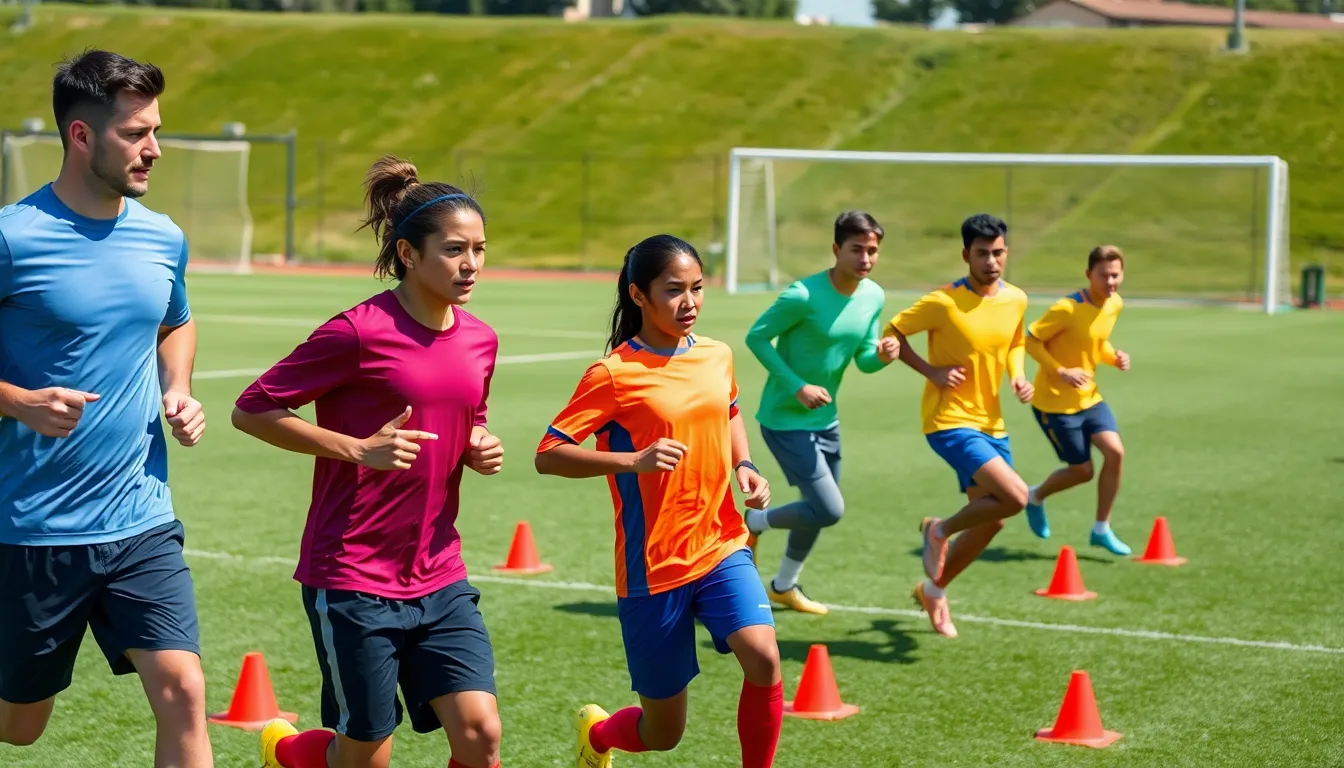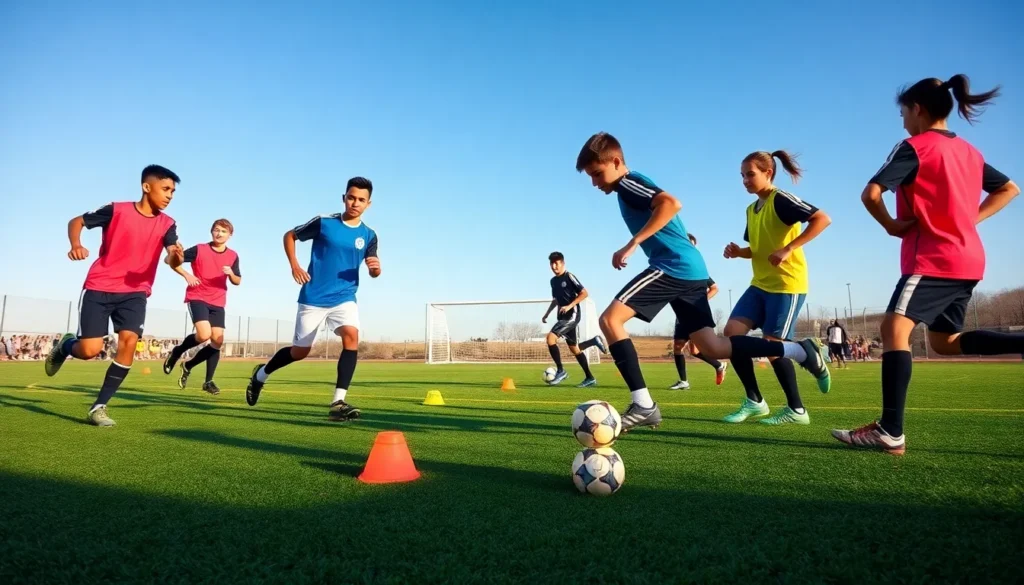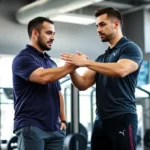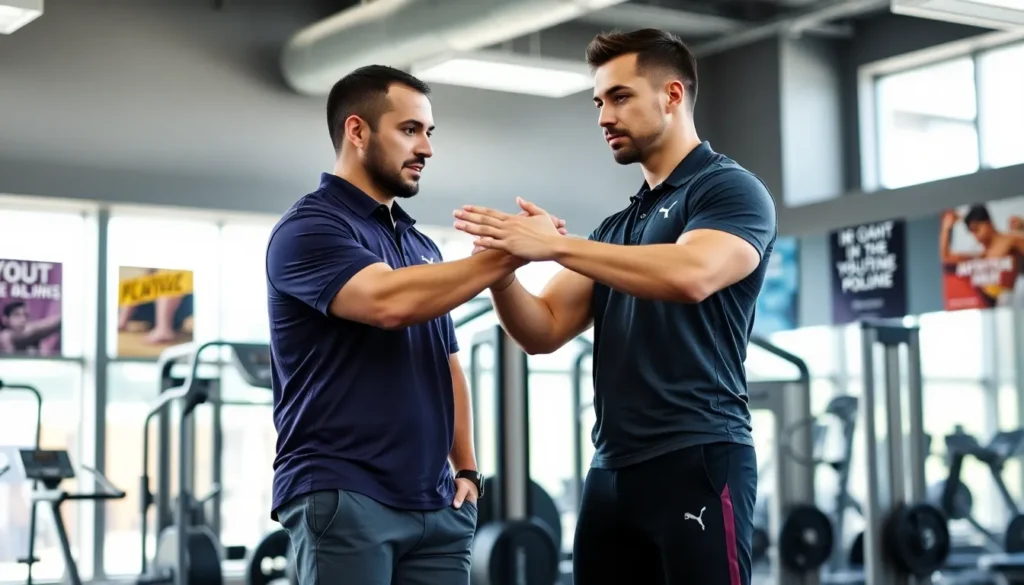Picture this: a sleek soccer pitch under a shining sun, with players darting across the field like gazelles. But wait, what keeps them running for 90 minutes straight without flopping? Hint: it’s not just the magic of teamwork. It’s the hidden gem of soccer, fitness training. In this guide, we’ll dig into why fitness is crucial for soccer players, the key components of fitness, and how to design a killer training program. Buckle up, because this journey to soccer fitness is going to be intense.
Table of Contents
ToggleImportance Of Fitness In Soccer

Fitness is the unsung hero of soccer. Imagine sprinting down the pitch in the final minutes of a tied match. If a player isn’t in peak condition, that last burst of energy may just fall flat. Soccer is a game of endurance, agility, and speed, making fitness a cornerstone for optimal performance. Without it, skills like accurate passing or precise shooting can fade when fatigue creeps in.
Also, a fit player reduces the risk of injuries. Strong muscles and a well-conditioned cardiovascular system lead to faster recovery times and lower injury rates. When a player is fit, they are more likely to remain on the field, impacting both their personal performance and their team’s success.
In essence, fitness in soccer isn’t just a nice-to-have: it’s a necessity. Whether a player is chasing after an opponent or making a critical play, maintaining optimal fitness levels can truly be the difference between victory and defeat.
Key Components Of Soccer Fitness
Soccer fitness is multifaceted and involves various key components:
1. Endurance
Endurance allows players to maintain their performance level throughout the game. Aerobic conditioning is vital, as soccer matches often last 90 minutes or longer. Training like long-distance running or interval training can significantly enhance a player’s endurance.
2. Speed
Speed isn’t just about how fast someone can sprint. It involves quick footwork and the ability to change direction rapidly. Speed training can include sprint drills, agility ladders, or plyometric exercises, all geared towards improving quickness on the field.
3. Strength
A strong body can resist tackles and maintain balance during play. Strength training, especially core and lower body training, enhances a player’s physical prowess. Squats, lunges, and resistance training can be part of a well-rounded fitness regimen.
4. Flexibility
Flexibility aids in preventing injuries and enhances a player’s ability to move fluidly. Stretching routines, yoga sessions, or dynamic stretching exercises pre-and post-training can greatly enhance flexibility.
5. Agility
Agility refers to a player’s ability to change direction quickly while maintaining balance. Incorporating ladder drills or cone drills can improve this crucial skill, allowing players to react efficiently during games.
Together, these components create a robust soccer fitness profile that athletes can build upon.
Types Of Soccer Fitness Training
When it comes to soccer fitness training, players have various methods at their disposal:
1. Aerobic Training
This is the foundation of soccer fitness. Long runs, cycling, or swimming can build aerobic capacity, creating endurance for lengthy matches.
2. Anaerobic Training
Soccer is characterized by short bursts of high-intensity activity. Interval training, like sprinting followed by short recovery periods, can increase anaerobic capacity and replicate the demands of the game.
3. Strength Training
Using weights or resistance bands can enhance muscle strength. Focus on compound movements that engage multiple muscle groups, like deadlifts and bench presses.
4. Plyometrics
These explosive movements improve power and speed. Jumping exercises like box jumps or burpees develop fast-twitch muscle fibers, essential for quick starts on the field.
5. Functional Training
This form of training focuses on movements that mimic playing scenarios. Drills that combine running with ball handling can develop fitness in a game-like setting.
6. Specific Position Training
Depending on their position, defender, midfielder, or forward, players can benefit from tailored workouts that enhance skills and fitness to fit their specific roles.
Designing A Soccer Fitness Training Program
Creating a comprehensive soccer fitness training program involves several crucial steps:
1. Assess Fitness Levels
Start by assessing current fitness levels. This can help identify strengths and areas for improvement, ensuring the program is tailored.
2. Set Clear Goals
Define specific, measurable, and achievable goals. Whether it’s increasing endurance or enhancing speed, having a clear focus guides training sessions.
3. Structure the Program
Balance various training components. A typical week might include endurance training, strength workouts, plyometrics, and flexibility sessions. It’s essential to avoid overtraining by allowing for rest and recovery.
4. Monitor Progress
Keep track of improvements over time. Encourage athletes to record their progress, whether in terms of speed, stamina, or strength increases. This not only motivates but helps in adjusting the program if needed.
5. Incorporate Nutrition
Finally, fitness doesn’t exist in a vacuum. A healthy diet enhances performance and recovery. Ensure adequate hydration and nutrients to fuel training effectively.
Tips For Effective Soccer Fitness Training
Maximizing the effectiveness of soccer fitness training involves a blend of smart strategies:
1. Stay Consistent
Consistency is key. Sticking to a training schedule reinforces habits and ensures steady improvement over time.
2. Mix It Up
Variety keeps training engaging. Incorporate different exercises to target all fitness components while keeping motivation high. Change your routines regularly to avoid plateaus.
3. Focus on Recovery
Recovery days are just as important as training days. Ensure proper rest and sleep to allow the body to repair and strengthen.
4. Train with a Partner
Partner training adds a level of accountability and competition. Working out with others can help push each individual to reach their potential.
5. Have Fun.
Remember, the goal is to enjoy the process. Training should be challenging but fun. Injecting fun elements into workouts can improve engagement and performance.













